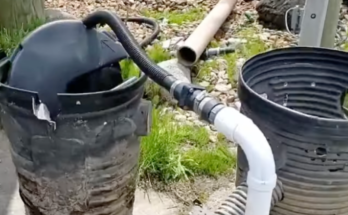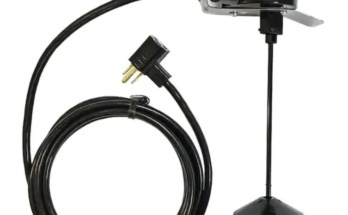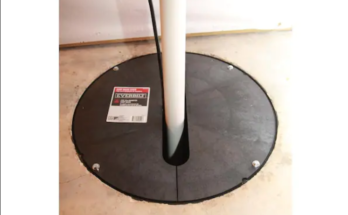Should you cover or seal up your basement’s sump pump to keep radon gas out if it is installed into the concrete floor of your home learn How To Seal Sump Pump Cover For Radon. Continue reading to find out How To Seal Sump Pump Cover For Radon. Do you fear that radon gas will infiltrate into your house? Since large concentrations of this hazardous radioactive gas are present in one in 15 homes in the United States, having a plan to seal the sump pump cover is crucial.
A sump pump cover isn’t necessary for plumbing purposes, but it will stop things from falling into the well and kids from playing in it. Sump Pump Cover was developed to meet a particular purpose. Because it is designed to keep your pump out of the water, they frequently last a long time. The entire area above the basin must be enclosed and sealed if you’re installing a radon mitigation system. This could be an issue, but there is a solution for it! Here we will discuss How To Seal Sump Pump Cover For Radon.
Thankfully, there are easy measures you can follow to make sure your sump pump cover is correctly sealed to keep radon out. After reading this post, you’ll learn How To Seal Sump Pump Cover For Radon. Everything is covered here, including the significance of sump pump sealing, appraising current pumps, and installing new covers. So continue reading as we describe the best approach to seal up a sump pump cover if you want assurance that radon will be kept away from your family and your property.
Cover For Radon Sump Pump
Radon can enter a house through a variety of openings, such as floor cracks, wall holes, and floor drains. Create a cover out of plywood and seal it to the floor with a foam-rubber gasket if you can’t locate one that fits your sump well. Seal the area around the discharge pipe, vent pipe, and power cord penetrations in the cover. Using a 4-in PVC pipe, vent the sump to the outside or to a vent stack. Only sumps with below-floor pipes that drain into the well should have a solid, sealed cover fitted. It is important for homeowners to learn How To Seal Sump Pump Cover For Radon.
Do Sump Pumps Need to be Radon Sealed?
Yes, a sump pump needs to be sealed in order to keep radon out of your house. An odorless, colorless gas called radon can easily enter cracks and gaps in your foundation or walls since it is abundant in the soil. To prevent dangerously high levels of radon gas within your home, it’s crucial to seal off all potential access points. Foam insulation is the best material for seal sump pump lid so we have to learn for How To Seal Sump Pump Cover For Radon. This will assist in establishing an airtight barrier between the interior of your home and the outside air, preventing radon from entering through the sump pump cover. Additionally, it’s crucial to frequently check the sump pump cover for any wear or corrosion that can allow radon to enter your house.
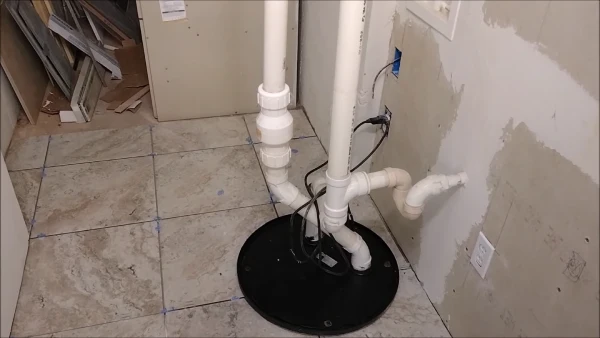
How To Seal Sump Pump Cover For Radon?
You may reduce the possibility of radon leaking into your house and guarantee the safety of you and your family by taking the appropriate procedures to seal up your sump pump cover. By using a sump pump seal kit with the help of a professional you can take the following steps to cover your sump pump by easy learning How To Seal Sump Pump Cover For Radon.
Install a Sump Cover for Radon Mitigation
Installing a radon mitigation sump cover is the most efficient technique to lower the danger of radon entering your house. Air cannot enter the home through the sump pump lid thanks to the seal created by this cover. It should produce an impermeable barrier that prevents any radon from penetrating into your home when placed correctly we have to learn How To Seal Sump Pump Cover For Radon.
Install Silicone Caulk
To stop radon from entering your home, seal off any tiny cracks or gaps around the sump pump lid using silicone caulk. Before replacing the lid on the pump, make sure you uniformly apply the caulk and thoroughly seal off all gaps surrounding the lid and lear for How To Seal Sump Pump Cover For Radon.
Use a Foam Sealer That Expands
To effectively prevent radon from entering your basement, big holes surrounding the sump pump lid can be sealed up with an expanded foam sealer. When using this product, go by the manufacturer’s instructions and ensure that any holes are tightly sealed for optimal security.
Seals for Line Up Gasket
You must align any gaskets that came with your sump pump properly in order for them to create a tight seal which prevents any radon from leaking into your home. You may buy replacement gaskets at the majority of hardware stores or from online vendors if your device doesn’t come with any or if the ones that are provided are worn out or broken due to age or use for more learn How To Seal Sump Pump Cover For Radon.
Change Worn-Out O-rings
Rubber O-rings may break and become brittle with time, enabling air to escape and perhaps allowing radon to enter your basement. For extra defense against radon exposure in your home environment, replace your O-rings right away with new ones if you see any indications of wear or breaking.
Place a Vapor Barrier
Before cement slabs are poured for foundations, driveways, or walkways around homes where there is a risk of radon exposure due to underlying soil conditions containing high levels of uranium or other radioactive materials as part of its composition, a vapor barrier is a plastic sheeting laid down over soil surfaces. Before pouring cement, erecting this barrier will help prevent subsurface gas leaks into houses.
Examine Power Connections
Make sure all electrical connections are tight and free of moisture that could lead to short circuits when exposed to water after heavy rains or snowstorms as these could result in power outages leading to the failure of pumps operating crucial systems, such as those responsible for the supply of clean drinking water in homes, posing possible negative effects on health from drinking contaminated water and leading to many serious illnesses, especially in young children and dont forget to learn How To Seal Sump Pump Cover For Radon.
Regular Maintenance
The ability to meet demand during times requiring more intense usage, such as heavy downpours leading to flooding, etc depends on all components of a sump pump functioning optimally and efficiently, which reduces the likelihood of general malfunctioning leading to inadequate pressure necessary for proper functioning.
Use Water-Resistant Paint
In order to further protect occupants from exposure to hazardous materials, waterproof paint should be used on top of the sealing measures. This provides an additional line of defense against moisture seepage through substructures.
Regularly Inspect The Basement
Regularly check the basement for any indications of potential gas leaks, and check the ventilation ducts to ensure that no leaks occur there either. In addition, look for structural integrity in the walls and floors to make sure everything is sound structurally to prevent weakening the foundation and potential collapse.
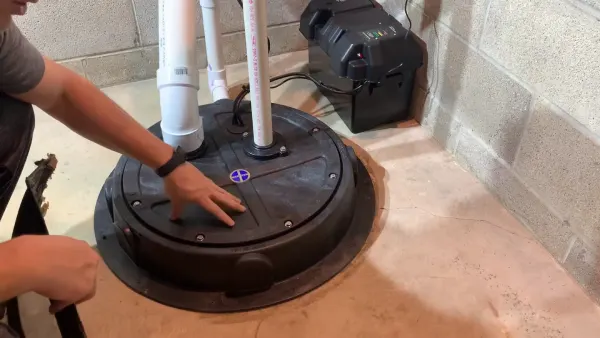
Conclusion
You may complete your DIY project successfully and with excellent results with just a few straightforward tools, materials, and some fundamental abilities and knowledge about How To Seal Sump Pump Cover For Radon. Above all things, safety should be your top priority. If you’re unsure, see an expert or get more guidance to ensure that everything is correctly sealed. We appreciate you reading this blog and hope you found some important guidance on how to seal sump pump cover for radon.
Read More Articles
| How To Finish Basement With French Drain |
| Dark Hardwood Floors in Kitchen 2023 |
| How to clean prefinished hardwood floors |
